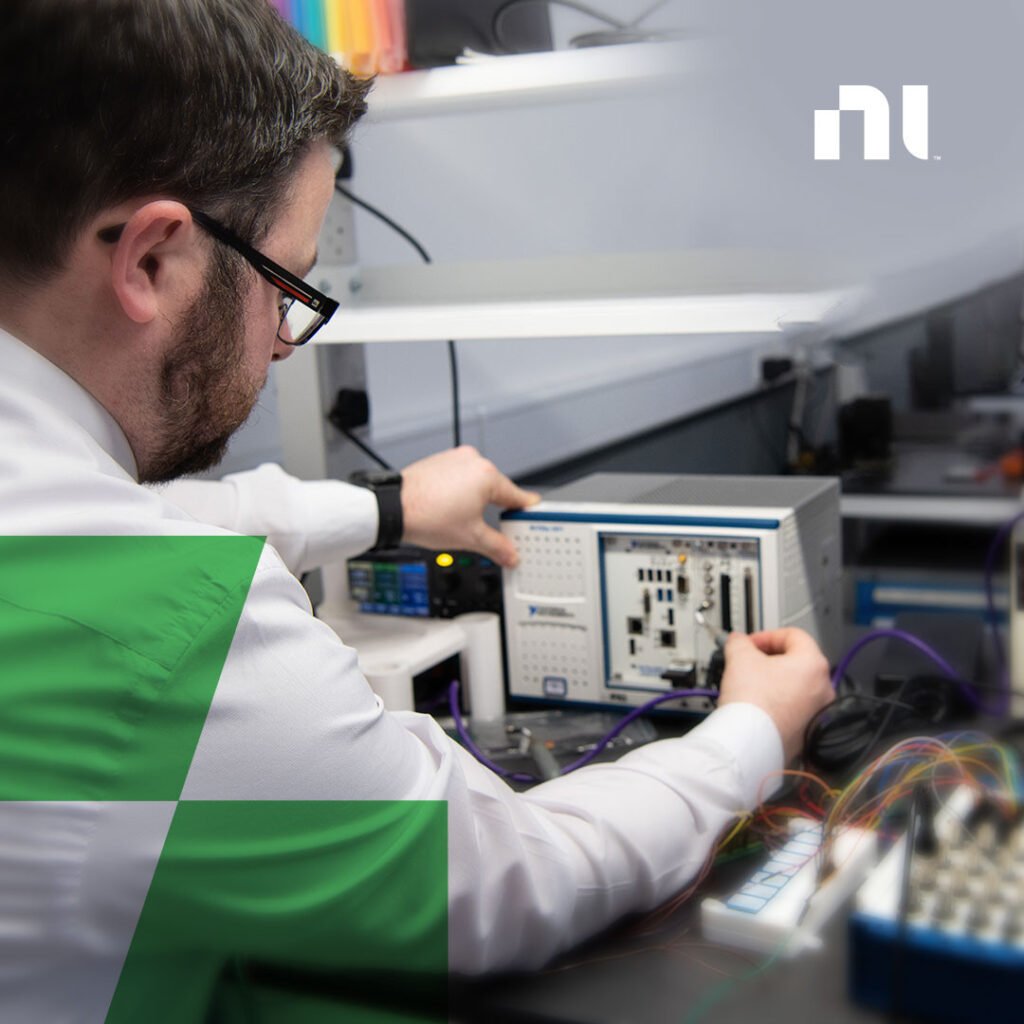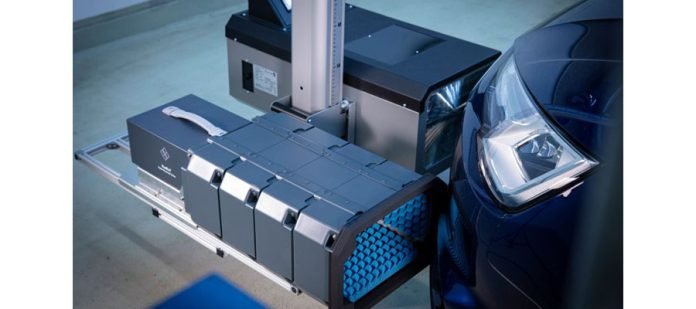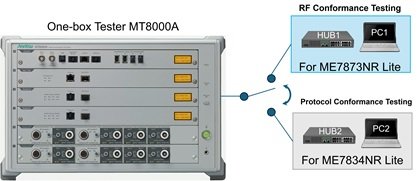In a significant leap forward for high-speed network testing, VIAVI Solutions has announced the release of the ONE-1600 testing module, the first solution aimed at addressing the growing demands of the 1.6Tb/s ecosystem. Built on 224G SERDES technology, this innovation marks a pivotal development in the networking industry, responding to the rapid scaling needs driven by emerging technologies such as artificial intelligence (AI), machine learning (ML), high-performance computing (HPC), and quantum computing.
Understanding the 1.6Tb/s Ecosystem
The tech landscape is evolving at an unprecedented pace, with bandwidth-hungry applications like AI and HPC pushing the limits of current infrastructure. As companies shift towards faster and more complex data processing capabilities, the 1.6Tb/s transceivers and 224G SERDES (serializer/deserializer) technologies are expected to play a critical role in enabling this transition. The rise of these technologies represents a significant opportunity but also brings major challenges for chip manufacturers, pluggable transceivers, and network equipment developers.
ONE-1600: A Game-Changer for Testing and Validation
The ONE-1600 module is the latest addition to VIAVI’s growing ONE LabPro platform, which already includes the HSE-800 800Gb/s test module. Designed to accommodate the OSFP1600 and QSFP-DD1600 form factors, the ONE-1600 is initially available in a two-port configuration. This solution delivers high-performance testing capabilities for companies needing to ensure the functionality, efficiency, and cost-effectiveness of their high-speed Ethernet solutions.
With 224G SERDES at its core, the ONE-1600 is engineered to address the increasing complexities that network developers face when designing and deploying next-generation transceivers. By offering robust validation tools, the ONE-1600 module helps manufacturers meet the rising demand for 1.6Tb/s bandwidth, driven by rapid advancements in AI clusters and other high-demand applications.
Industry Impact: The Sharp Ramp-Up in Demand
According to Dr. Vladimir Kozlov, CEO and Chief Analyst at LightCounting, the adoption of 1.6Tb transceivers is accelerating faster than ever, particularly in AI clusters that rely heavily on optical connectivity. LightCounting’s forecasts predict a dramatic increase in demand, with the production of these transceivers projected to reach a million units by 2025, up from tens of thousands in 2024. Kozlov emphasized that this growth will put the entire supply chain to the test, from component manufacturers to network infrastructure providers.
How the ONE LabPro Platform Stands Out
What sets the ONE LabPro platform apart is its ability to integrate physical layer insights with multi-port, multi-flow data and control plane Layer 2/3 Ethernet testing. This comprehensive approach allows for testing across a variety of data rates while maintaining high accuracy and efficiency. With scalability and port density at the forefront, the platform can support up to 64 x 1.6Tb/s test ports using the ONE-1600 module, or 128 x 800Gb/s test ports using the HSE-800 module.
The platform also offers advanced features such as:
- Full breakout capabilities for detailed testing of individual components.
- Multi-user logical port support, allowing simultaneous testing by different teams.
- Single-user per logical port granularity, ensuring precise control during testing.
- A modern web-based interface that simplifies operations.
- Python-based automation framework for enhanced traffic generation and analysis.
These features make the ONE LabPro platform a versatile tool for troubleshooting and validating the performance of integrated circuits, pluggable interfaces, switching and routing devices, and network systems.
Collaborations and Market Adoption
Several industry leaders are already leveraging VIAVI’s new solution to advance their own product development initiatives. For example, InnoLight, a global leader in high-speed optical transceivers, has significantly invested in 1.6T optics based on 224G SERDES technology. According to Osa Mok, Chief Marketing Officer of InnoLight, their collaboration with VIAVI has been pivotal in accelerating product development and maintaining high-quality standards.
Mok noted that these new optics enable cloud operators to rapidly scale their networks, meeting the ever-growing demands of end customers. The combination of VIAVI’s testing solutions and InnoLight’s optical innovations underscores the importance of robust testing and validation in the modern networking landscape.
Addressing the Needs of Hyperscale Cloud and AI Infrastructure
Another key player in the ecosystem is Lumentum, a leader in photonic devices and optical networking solutions. Hui Xu, Group Vice President of R&D for Cloud and Networking at Lumentum, emphasized that their 1.6T transceiver modules, coupled with foundational high-speed indium phosphide photonic devices and chip-scale packaging, are designed to support hyperscale cloud operators and AI infrastructure providers.
Lumentum’s customers, including hyperscalers and AI-driven companies, are focused on scaling AI and ML infrastructures, and VIAVI’s testing solutions have played an essential role in ensuring the reliability and efficiency of their products. The ability to validate high-speed optical solutions using the ONE-1600 testing module has been a key enabler in the development of advanced AI and ML networks.
Why the ONE-1600 Matters for the Future of Networking
As companies around the world continue to scale their data center and networking infrastructure, the need for high-speed, accurate, and efficient testing becomes more critical. The ONE-1600 offers a solution that can grow alongside the ever-expanding requirements of the 1.6Tb/s ecosystem.
With support for the latest 224G SERDES technology, the ONE-1600 ensures that manufacturers and developers can meet the challenges of testing at these higher speeds without compromising on accuracy or efficiency. By supporting a wide range of data rates and offering an intuitive interface, the ONE-1600 helps reduce the complexity of testing while boosting deployment and validation efficiency.
VIAVI’s Role in the High-Speed Ethernet Roadmap
Tom Fawcett, Senior Vice President and General Manager of VIAVI’s Lab & Production division, highlighted the company’s commitment to supporting the development of the 1.6T ecosystem. With the release of the ONE-1600 module, VIAVI aims to help its customers achieve their ambitious high-speed Ethernet roadmaps.
By integrating the ONE-1600 into the ONE LabPro platform, VIAVI provides a complete testing solution that can scale with the growing demands of data centers, cloud operators, and network equipment manufacturers. The platform’s ability to support mixed combinations of test modules, combined with centralized management and advanced automation tools, makes it a vital tool for ensuring the success of next-generation networking products.
Conclusion
As the digital world continues to grow in complexity, the importance of accurate testing and validation cannot be overstated. VIAVI’s ONE-1600 testing module, with its integration into the ONE LabPro platform, is an essential tool for companies looking to stay ahead in the rapidly evolving 1.6Tb/s ecosystem. With the rise of AI, ML, and quantum computing, the demand for faster, more reliable networks will only increase, making solutions like the ONE-1600 critical for ensuring future success.
Learn more about VIAVI at www.viavisolutions.com




